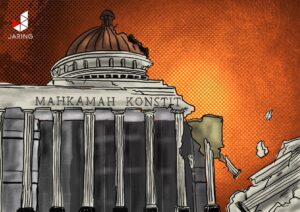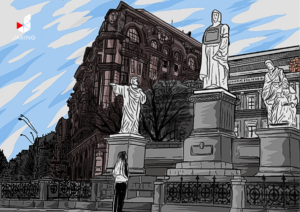Ukraine, two years after being invaded by Russia on February 24, 2022, is a portrait of resurrection. Across the affected areas, any post-attack rubble was hardly left. Roads have been repaired. Damaged houses have been rebuilt. What remains now are the wrecks of tanks and missiles in Saint Michael’s Cathedral square, lining up photos of the victims in crowded places, and the ruins of the Irpin bridge bombed by the Ukrainian army on February 25, 2022 to keep the Russians out of Kyiv, deliberately left as a memorial to the traumatizing course of the war.
At the end of winter two years ago, Yuliya Vyshnevetska left her home destroyed by Russian forces in Lyman, Donetsk Oblast, Ukraine, along with a dozen other refugees. Almost penniless, she migrated from the South to Lviv, a city that borders Poland to the West. The city, about 1240 kilometers from Lyman, has been one of the temporary refugee shelters since Russia invaded Ukraine on February 24, 2022.
“I want to go home, but I have no home now. They destroyed it with tanks,” she said in Ukrainian as translated by Yulia Volfovska of the non-governmental organization, Ukraine Crisis Media Center (UCMC) on Saturday, February 24, 2024.
Since April 2022, Yuliya has been living in a modular house with her daughter in Skyhiv District. From the outside, the residence looks exactly like the racer’s garage (pit) at the Mandalika International Circuit, Lombok, West Nusa Tenggara, Indonesia. According to the Head of Administration of the Modular House, Olei Fedoy, the building was fabricated in Poland before being installed in the refugee camp. The funding came from the Polish government. “Living here is free,” Olei explained when he took me to see the modular housing with some journalists from various countries in Asia, including Malaysia, the Philippines, and India.
Each family living in the modular houses occupies a room with an area of 18 square meters. The room does not look very spacious because the ceiling is only around 2 meters high from the ground. To date, at least eight blocks of two-story residences have been built. Each floor consists of 22 dwellings separated by a white hallway, all white, except for religious symbols with two Ukrainian Flags pinned to the wall.
Like most settlements in Ukraine, these modular homes also have various public facilities, such as a playground. At the center of the modular, there is a kitchen and a communal utility room measuring about 54 square meters, while the bathroom is built on the left side upon entering the building. Divided into five shower cubicles, the communal bathroom is also equipped with a room heater, water heater, and two rectangular wash basins with six water taps. “The male and female bathrooms are separated at each end of the building. The Church or NGOs usually provide food, but residents can also cook for themselves,” Olei said.
The modular settlement is currently home to around 1400 people from various regions bordering Russia. The 3℃ outdoor temperature at the end of February 2024 attracted the people to make the kitchen as the heart of the communal space. Four women were seen chatting, three others were cooking there. At the same time, a man washed clothes with the available tumble dryer. The room felt warmer thanks a device that constantly blows heat to warm the soles of the feet and hands. In summer, the heating device is left off.
Yuliya admitted that she spent most of her time in the soup kitchen when she’s not doing social activities or church services. When we visited her house, she was sitting at the dining table holding a stick. She occasionally talked about the developments in the war between Ukraine and Russia. When asked about Russian President Vladimir Putin, she closed her eyes before answering with her eyes blazing.
“I want Ukraine to win. And I want to return to my previous life. I want to arrest Putin. Ukraine needs more weapons,” said the woman in the blue headdress, who has almost forgotten how old she is. Some people who know her say she is 86 years old.
****
Yuliya’s hometown, Lyman, located in Eastern Ukraine, has been a battleground between Ukrainian and Russian forces since 2014. The war between two sides that share many years of history is a recurring one. “I remember the World War II,” she recalled. During Russia’s massive invasion of Ukraine in 2022, Lyman was the scene of a fierce fighting. Deserted streets were littered with rubble, buildings burned along the sides. The nearly destroyed city was briefly taken over by Russia in May 2022, before being liberated by Ukrainian forces.
As a result of the fighting, most of Lyman’s 20,000 residents were displaced, including Yuliya. Many of them became victims. “I cried a lot,” she said when reminiscing the traumatic events of years ago.
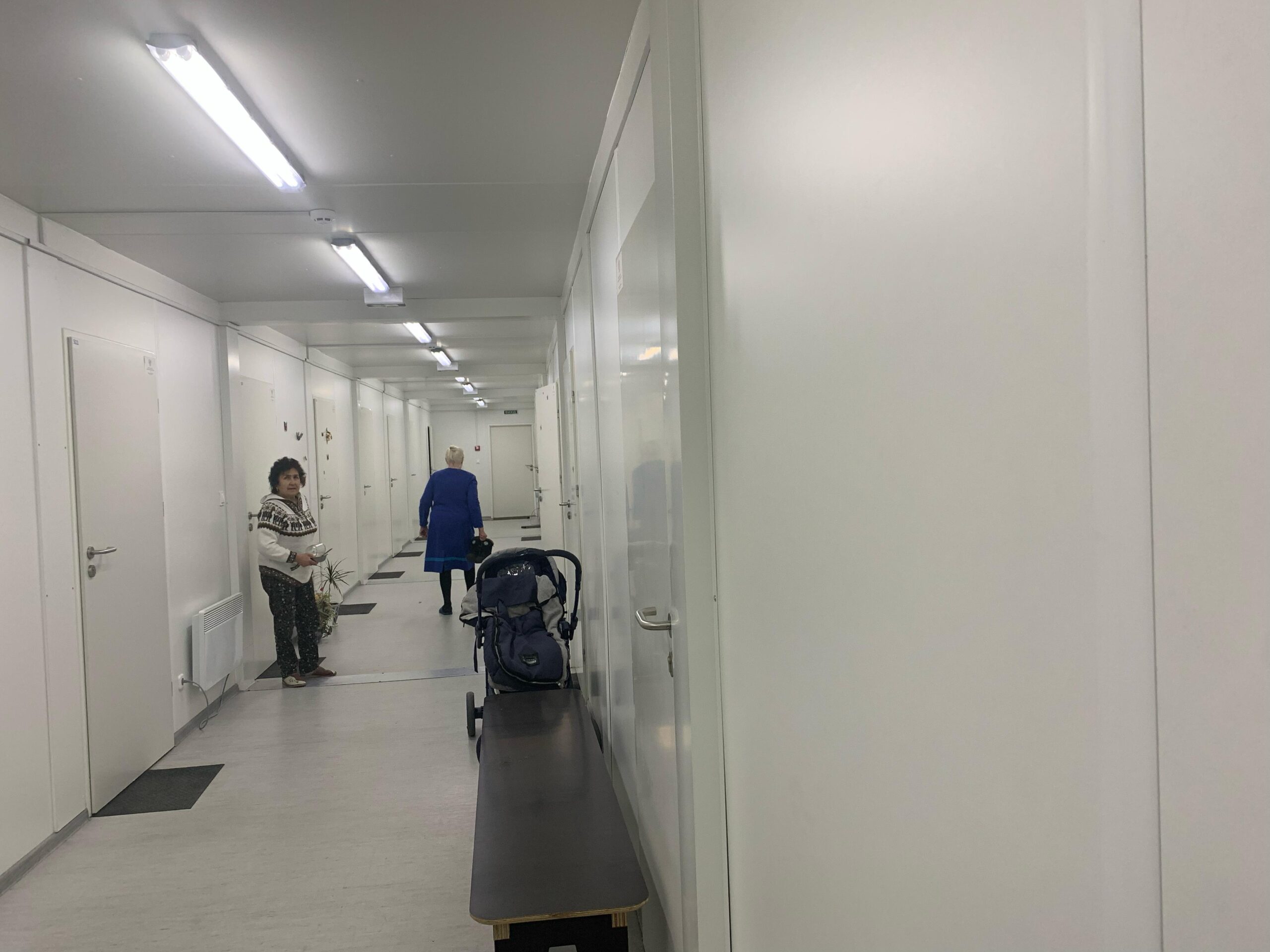
As of February 2024, about 18% of Ukraine remains under Russian occupation. This includes the Crimean Peninsula, which was annexed in March 2014, and large parts of Donetsk and Luhansk in the east, which Russia seized shortly after.
Ukrainian President Volodymyr Zelensky said that 31,000 soldiers died during the Russian invasion of Ukraine. To pay tribute, the government, as well as the Ukrainian people, erected memorial boards in memory of the war victims in many locations, especially in areas where Russian troop convoys crossed.
Inside the hull of a 16th-century Catholic church, Sts. Apostles Peter and Paul Garrison in Lviv, for example, photos of the victims are displayed on the left side of the sacred area of worship. While in the capital city of Kyiv, visitors placed photos, flowers, and flags on a 100-meter-long memorial wall located not far from Saint Michael’s Cathedral Square. About an 8-minute walk from this place, there are millions of wreaths and Ukrainian flags embedded into the park around the Maidan Nezalezhnosti Independence Monument.
The biggest war memorial is the wreckage of the bridge connecting Irpin and Bucha in Romanivka. Instead of repairing the bridge over the Irpin River, the Ukrainian government built a new bridge right next to the ruins of the old bridge. This bridge had previously been deliberately destroyed by the Ukrainian army on February 25, 2022, to prevent Russian troops from invading deeper into the heart of the capital. Consequently, the fighting between Ukrainian and Russian forces took place along Northwest Kyiv, such as Borodyanka, Bucha, Irpin, Horenska, and Moshchun.
One of the residential buildings in Borodyanka still bears the charcoal soot from the moment that the Russian planes dropped their bombs. The five-story building was partially destroyed, leaving a hole more than 3 meters deep, as well as debris, books, and furniture no longer in use.
“On March 1, 2022, a Russian plane released bombs. There were about 48 people in the building. Some of them died. Some were shot in the knee and back of the head,” resident Natalia Buzovetska said. In these ruins, the anonymous muralist Banksy drew a child in a judo uniform slamming an adult, believed to be a representation of Russian President Putin.
Meanwhile, in the village of Moshchun, residents built a simple shrine to commemorate the dead by pinning their photos, women and men, on a row of pine trees. Jaring.id arrived in Moshchun in late February, a few days before the second anniversary of the Russian invasion. Like other towns around Kyiv, this village located at the west of the capital is included in the path attack of the Russian offensive.
Vadym Zherdetskyi, the village chief of Moshchun, remembers very well how convoys of Russian soldiers fired, set fires, threw bombs, and spewed mortars into residential areas. One of the explosives launched by the Russian soldiers contained tubular metal, just like a conch shell made tight and jagged. When it explodes, the metal breaks into small pieces that can be fatal to the body. “Of course, we were scared,” he said on Saturday, February 23, 2024.
Even so, said Vadym, many residents in his village flocked to help defend. While adults were digging hiding trenches, women and children were concocting bombs called Molotov cocktails. Residents in this village also distributed aid to other villages flooded by the deliberate breaching of the Kozarovichi dam to raise the water level of the Irpin River. “The Ukrainian army had only arrived here on the night of February 24, 2022,” he explained.
After the Russian retreat, this small village, located not far from Kyiv, was dubbed a “shield” by President Zelensky. The president considers Moshchun to have played a central role in liberating Kyiv from the Russian occupation attempt on April 2, 2022. “After defending Moshchun, we survived. Our capital did not fall. Kyiv survived, and all of Ukraine survived,” Zelensky said in late March 2023.
Almost two years after the Russian invasion, the villagers of Moschun are gradually getting back on their feet. Some children were seen carrying school bags. Parents have started repairing their homes, starting from installing asbestos roofs, frames, and doors, to reactivating heaters and fireplaces. From a distance, one or two chimneys were seen puffing out smoke.
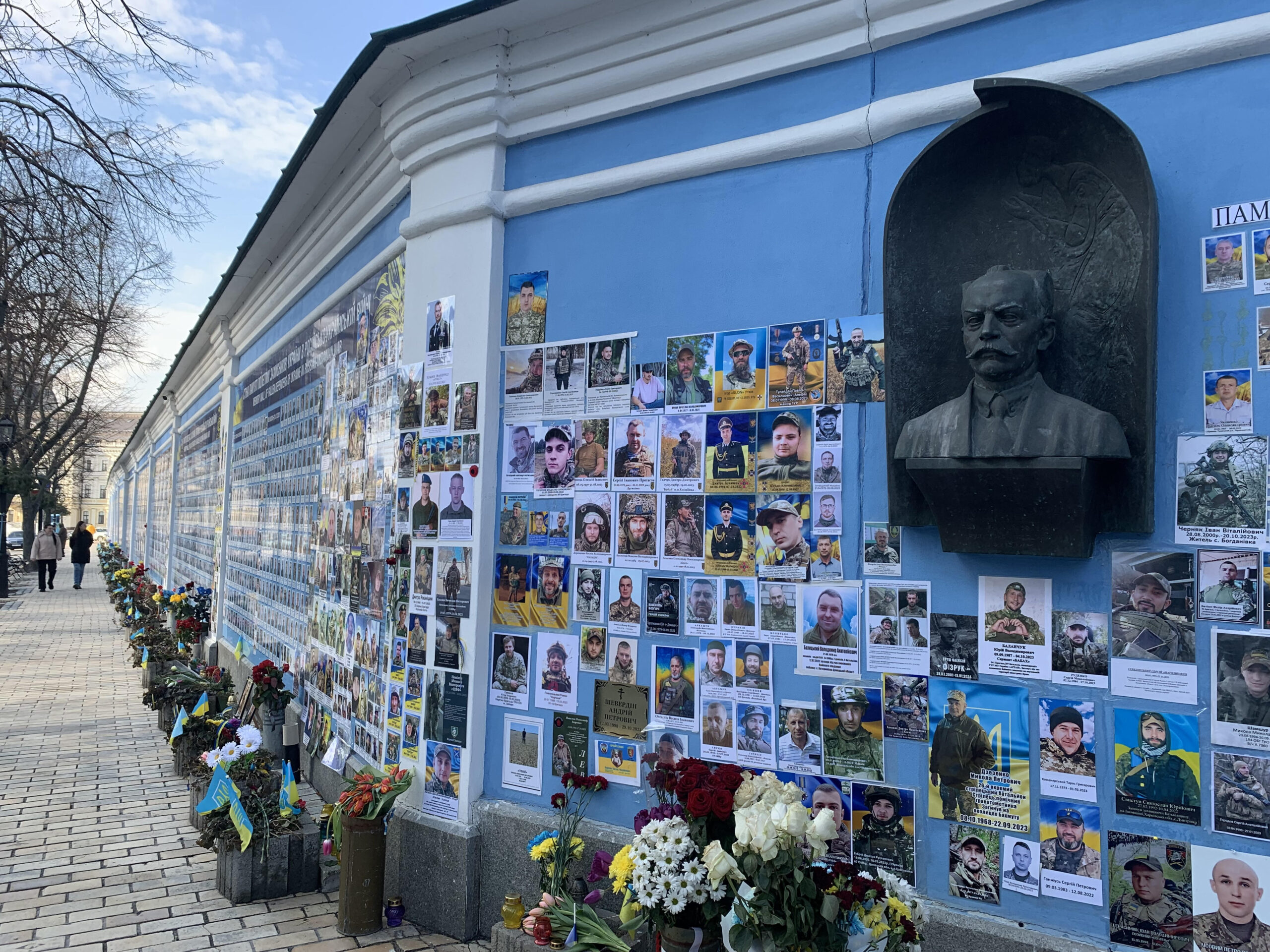
When I visited the village on Friday, February 23, a small number of houses on the side of the road were still in ruins. There were bullet holes and soot on the walls. Broken bricks and glass were scattered around the buildings. Each house that is damaged or being repaired is covered by a green or red zinc fence. Some of them have been completed. Meanwhile, the pedestrian was still being repaired. “We are renovating, thanks to the support of various parties, including non-profit organizations,” Vadym said.
Based on a report by RebuildUA and KSE Institute – an institute of Kyiv School of Economics, on the infrastructure of Moschun Village, around 2,000 buildings were damaged in Moschun during the war. The most damage happened in residential areas, consisting of 1964 housing units, as well as buildings and farms, 24 industrial buildings, 11 social infrastructures, as well as schools, churches, cultural houses, and post offices. Losses were estimated to reach more than US$37.3 million.
Scenes of destruction like those in Moshchun also colored the corners of other cities. Irpin is a town that serves as Kyiv’s line of defense. It is only 5 kilometers away. During the war, about 95 percent of the 100,000 people living in Irpin were evacuated. “We also evacuated people by train for three days before the planes dropped bombs,” said Oleksandr Markushyn, Mayor of Irpin, when interviewed next to a 10-story exposed brick building damaged by the war.
“I can show you a video of how two children, a woman, and volunteers were killed,” he continued, pulling out a cell phone from his pants pocket that afternoon.
According to Oleksandr, Irpin City suffered many losses after the Russian invasion. Tank battles on the highway caused about 70 percent or about 1000 buildings damaged, and public facilities destroyed, while infantry battles using heavy artillery and mortar equipment left about 50 soldiers and 300 civilians dead. “The road where we stand now was all destroyed,” he recalled.
Today, Irpin City has been rebuilt. Some workers were seen building houses next to the highway. According to the mayor, Irpin needs at least US$1 billion or around Rp15.5 trillion to reconstruct all war-damaged buildings. The funds were allocated from the government budget, including aid from European partner countries. “The houses are being rebuilt. At that time everything was destroyed and now everything is being renovated,” he explained.
Another city in northern Ukraine is Chernihiv, located not far from the border with Belarus. The clashes between Russia and Ukraine in the city lasted until the end of 2023. On Saturday, August 19, 2023, a Russian missile attack on the town square killed seven people, including a 6-year-old child, and left more than 100 people injured. The Chernihiv Municipality said there were about 683 people killed, 1,339 injured, and 13,594 buildings damaged during Russia’s invasion of Ukraine.
Among the damaged buildings was the oldest movie theater, a relic of World War II in the 1930s. The building, which is now the Chernihiv Regional Youth Center, was destroyed by a Russian missile. The explosive force caused almost the entire building to collapse, except for the facade. The explosion was so powerful that it left a hole on the ground with a depth reaching two meters and a width of around the size of the Type-21 house’s living room.
****
Russia’s military aggression against Ukraine in 2022 undoubtedly caused a mass impact. Not only has it claimed many lives on both sides, destroyed cities, damaged the economy, and torn up farmlands, but it has also devastated environmental ecosystems and biodiversity.
The Ministry of Environmental Protection and Natural Resources of Ukraine recorded at least 4000 cases of environmental damage during the war. The total amount of greenhouse gas emissions from 24 months of war is estimated at 150 million tons of CO2 eq (carbondioxide equivalent). The majority of emissions came from the consumption of fossil fuels by soldiers, including the movement of refugees, as well as massive fires along the front lines.
“Missiles and drone strikes were exploding in Ukraine, but the chemicals from these explosions were also spread over thousands of kilometers,” Yevhenii Fedorenko, Deputy Minister of the Environment of Ukraine, said on Thursday, February 22, 2024.
Emissions from rebuilding projects in war-ravaged cities are predicted to increase total emissions. “We estimate that it will take 20 years to restore all areas,” he added.
On the other hand, there are about 10 national parks, eight nature reserves, and two biosphere reserves that were damaged. According to the deputy minister, the war also had a major impact on the Molochne Liman hydrological reserve and the Dzharylhatskyi Nature Park, which had gained status as nature reserves since 1974.
In August last year, fires burned around 1,500 hectares of land in the protected nature park of Dzharylhach Island in Southern Ukraine. “No country in the world has ever faced an ecosystem problem as big as ours,” he added.
In addition to the threat of environmental damage, Ukraine is also still facing the potential danger of active explosives scattered in parts of Ukraine. Of the 473,000 mines and bombs that have been defused, there are still about 156,000 square kilometers of land that need to be cleared of bomb threats.
The Ministry of Environment estimates the losses at €56.7 billion over the two years of the war. These losses include €13 million, or around Rp221 billion, resulting from damage to 744 water management facilities in Ukraine. “These losses are twice as big as the report we submitted a year ago,” he explained at the UCMC office in Kyiv.
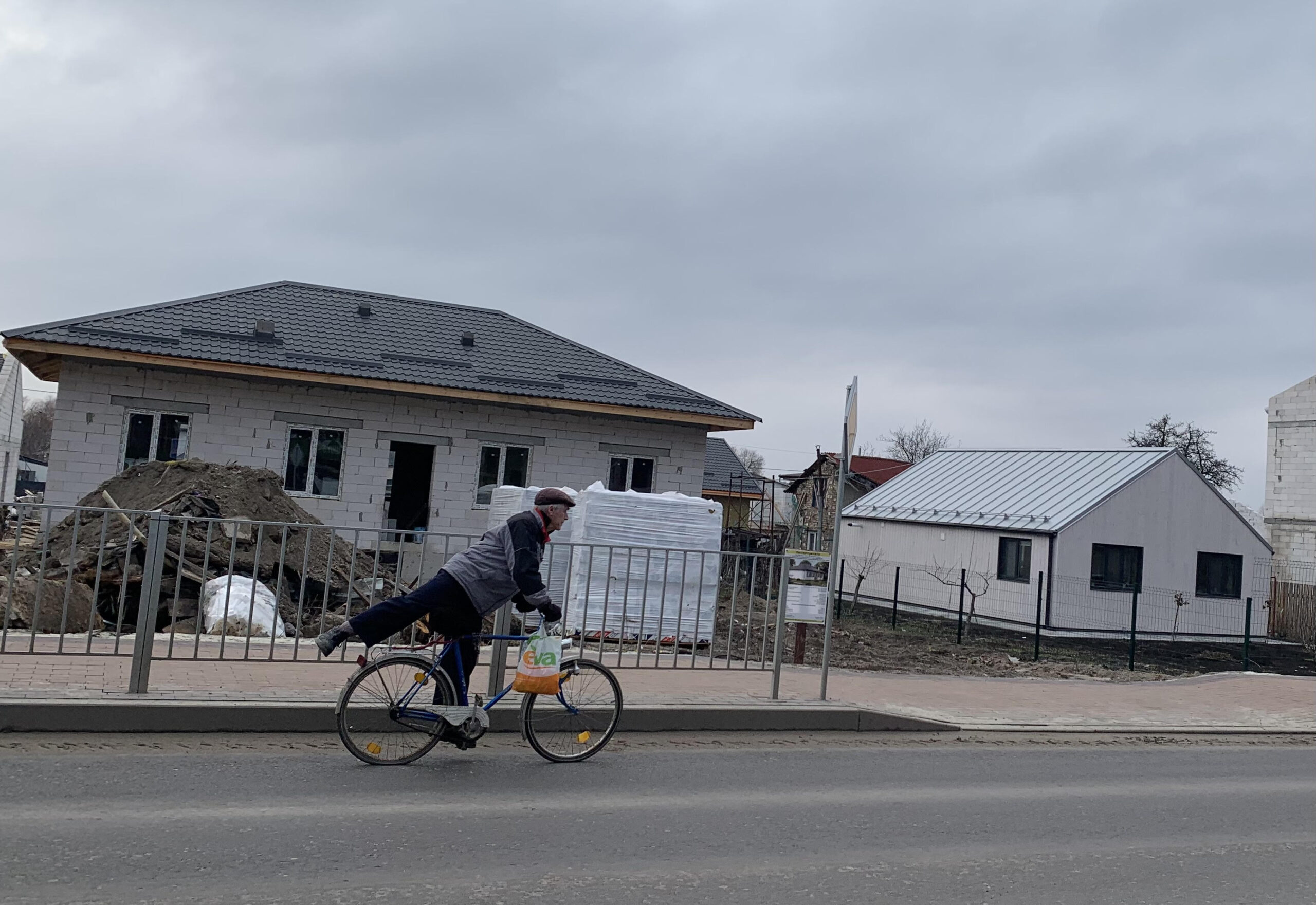
The movement of large numbers of refugees from war zones to other areas not only leaves a trail of carbon emissions but also creates various social problems in the community. Refugee destination cities like Lviv are among the regions struggling to solve this. “Our region is indeed far from the front lines, but it does not necessarily mean that [we have fewer problems]. This war feels close because we have almost no family that is not affected. We have dozens of people called up to serve as soldiers, men and women,” Lviv Governor Maksym Kozytskyi said in his office at 18 Volodymyr Vynnychenko Str, on Wednesday, February 21, 2024.
The governor explained that a problem arising from the war was the increase in population. Before the war, the population of Lviv City was only about 2.5 million people. Since February 24, 2022, the city has seen the inbound of about 450,000 people every day. At its peak, the population of Lviv increased dramatically to about 4.5 million people.
The main problems with the increase in population include the supply of food, houses, and other basic necessities. The traffic in Lviv has also turned to be increasingly frenzied. “The quality of health and psychological services for refugees is also our concern. This includes the provision of new jobs and the relocation of business premises,” he explained.
One of the entrepreneurs who moved his factory to Lviv was Yurii Tustanovskyi. He is the co-founder of a small and medium-sized enterprise, Rekava. Kava means coffee in Ukrainian. As the name implies, the factory produces candle containers and plant pots from recycled coffee grounds. “Every day, I think it would be easy to quit, but this is important for Ukraine. From this business, I can help pay soldiers’ salaries. This is a big task for me,” he said at his factory in Shevchenkivskyi District, on Wednesday, February 21, 2024.
The Deputy Minister of Economy of Ukraine, Volodymyr Kuzyo, whom we met separately, supports the existence of entrepreneurs like Yurii. He convinced more businesses to invest in Ukraine. According to him, this is because not all regions in Ukraine are experiencing war turmoil or are being annexed by Russia. “It is important to understand that not all regions in Ukraine are war zones,” he said reassuringly.
****
Volodymyr’s words also made me feel safe in Kyiv. After that, or the day before the second anniversary of the Russian invasion, we did not expect any surprising news. But in fact, there was a security alert. We were jolted when the Air Alert application installed on each other’s cellphones suddenly warned, “There is an air alert in Kyiv. Proceed to shelter” with an exclamation mark (!) on Friday evening, February 23, 2024. At that time, I was having dinner at around 21:55 local time with my colleagues at a restaurant located not far from the metro station. “Let’s go to the Metro now. If there is an air raid warning, use the free train,” Yuliya said that night while wearing a beanie.
We then packed up our belongings and put on our thick jackets before rushing on foot to the subway station, which is situated 105.5 meters under the ground. It was a short distance, maybe less than a kilometer from the restaurant.
It was a rainy night. The streets were deserted, but the front of the station was packed with young people. The train immediately became crowded. Amid the mass, I remembered a news report that explained how Arsenalna Station, along with other subway stations in Kyiv and other cities, became part of the people’s refuge when Russian rockets hit the country. They brought everything they could carry for temporary shelter, from sleeping bags to blankets to pets.
That night, we were lucky that we could stay at the Dnipro Hotel, which is located not far from the Maidan Nezalezhnosti Independence Monument. Unexpectedly, we were not lying in a room with a warm mattress. Instead, we stayed in a shelter bunker underneath the hotel building, to be precise, and waited until the airstrike warning in Kyiv ended.
The report titled “Kyiv revives after two years of Russian aggression” was published with the support of the Indonesian Media Development Association (PPMN) and the Ukraine Crisis Media Center (UCMC).



